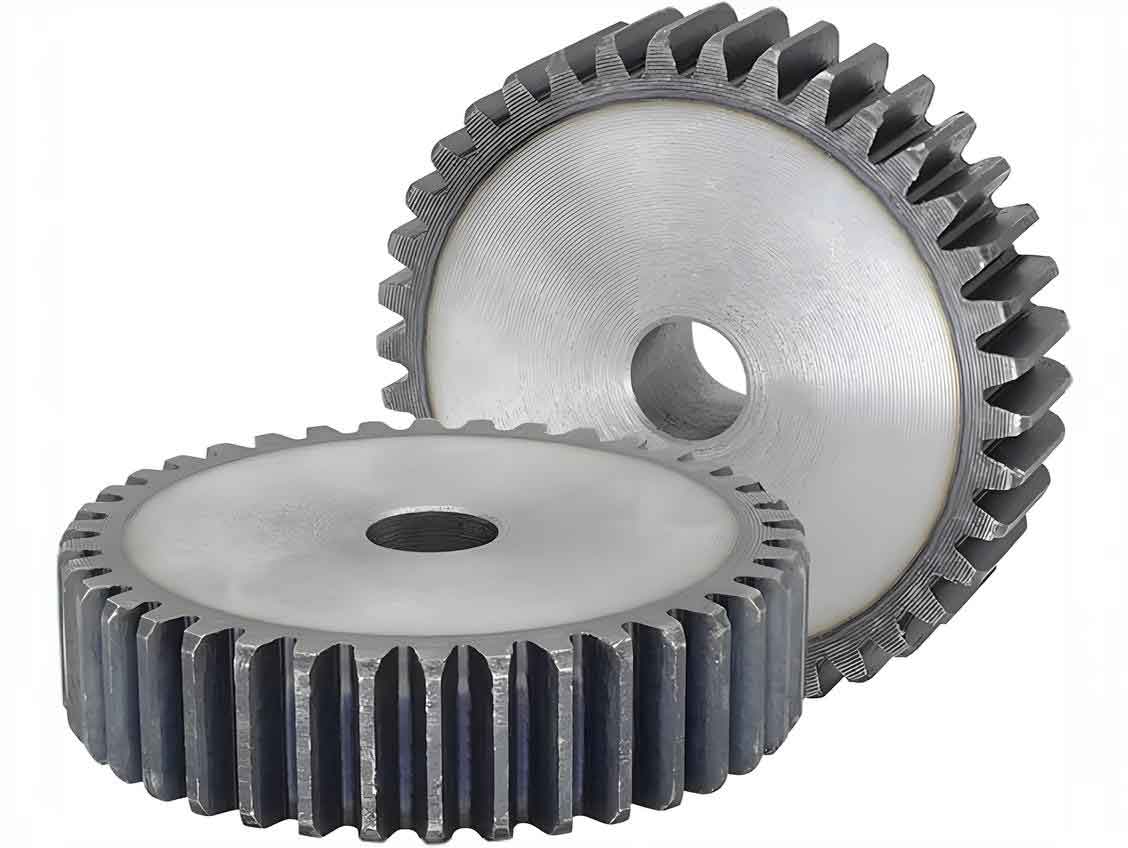Abstract
This thesis focuses on the research of planar spiral toothed line cylindrical gears and their high-efficiency machining device. Cylindrical gears are crucial transmission components in various mechanical devices and are essential for measuring modern industrialization progress. This study proposes a new type of cylindrical gear with a planar spiral toothed line, aiming to improve manufacturing efficiency, enhance load-bearing capacity, and prolong service life.
Key Words: Cylindrical Gear; Planar Spiral Toothed Line; Machining Method; Machining Device

Chapter 1: Introduction
Table 1: Research Background and Significance
| Research Area | Background | Significance |
|---|---|---|
| Cylindrical Gear | Traditional gears have limitations in transmission performance. | Improving gears can enhance machine performance and efficiency. |
| Planar Spiral Tooth | Limited research on spiral toothed gears. | Planar spiral toothed gears offer better load-bearing capacity. |
| Machining Method | Existing methods are inefficient. | Developing a new method can reduce costs and improve efficiency. |
Chapter 2: Meshing Mechanism and Parametric Modeling of Planar Spiral Toothed Line Cylindrical Gears
Table 2: Main Parameters of Planar Spiral Toothed Line Cylindrical Gear
| Parameter | Description |
|---|---|
| Modulus (m) | Basic dimension determining gear size. |
| Number of Teeth (Z) | Number of teeth on the gear. |
| Pressure Angle (α) | Angle between the line of action and the normal to the pitch line. |
| Tooth Width (B) | Width of the gear tooth. |
| Helix Radius at Mid-Width (T_R) | Radius of curvature of the spiral tooth line at mid-width. |
Chapter 3: Stress Analysis of Gear Installation Axes with Errors
(Detailed stress analysis tables and figures can be included based on the specific data and results from the thesis.)
Chapter 4: Machining Methods of Planar Spiral Toothed Line Cylindrical Gears
Table 3: Overview of Machining Principles
| Machining Principle | Description |
|---|---|
| Single-Tool Machining Principle | Using a single tool to machine the gear. |
| Multi-Tool Machining Principle | Using multiple tools arranged in a planar spiral line. |
| Deep-Cut Machining Principle | Detailed process of cutting deep into the gear material. |
| Generative Machining Principle | Continuously generating the gear tooth profile. |
Chapter 5: Machining Device and Trial Cutting Experiment
Table 4: Main Components and Functions of the Machining Device
| Component | Function |
|---|---|
| Bed (X-axis, Z-axis) | Supports and moves the gear and cutting tools. |
| Large Diameter Tool Disk | Holds and rotates the cutting tools. |
| Radial Adjustment Part | Adjusts the radial distance of the tools on the tool disk. |
| Mobile and Rotary CNC Table | Positions and rotates the gear during machining. |
| CNC System | Controls the movement and rotation of the device components. |
Table 5: Comparison of Machining Times
| Gear Type | Machining Method | Machining Time |
|---|---|---|
| Straight Toothed Cylindrical Gear | Hobbing | 160 min |
| Planar Spiral Toothed Line Cylindrical Gear | Proposed Method | 35 min |
Chapter 6: Summary and Outlook
Table 6: Research Achievements
| Achievement | Description |
|---|---|
| New Gear Type | Planar spiral toothed line cylindrical gear. |
| High-Efficiency Machining Method | Full-tooth-width, high-linear-speed continuous generative milling. |
| Machining Device | Self-developed device specifically for the new gear type. |
| Improved Characteristics | Enhanced load-bearing capacity, reduced manufacturing costs. |
Outlook for Future Research
- Further optimization of the gear design for better performance.
- Improvement of the machining method for higher efficiency and accuracy.
- Exploration of potential applications in various industrial fields.
Conclusion
This thesis proposes a novel planar spiral toothed line cylindrical gear and its corresponding high-efficiency machining method. Through detailed research and experiments, it is demonstrated that the proposed gear type offers significant advantages in load-bearing capacity, manufacturing efficiency, and cost-effectiveness. The self-developed machining device successfully machined ideal gear samples, validating the feasibility and practicality of the proposed method. Future research will focus on further optimizing the gear design and machining process to meet the diverse needs of industrial applications.
